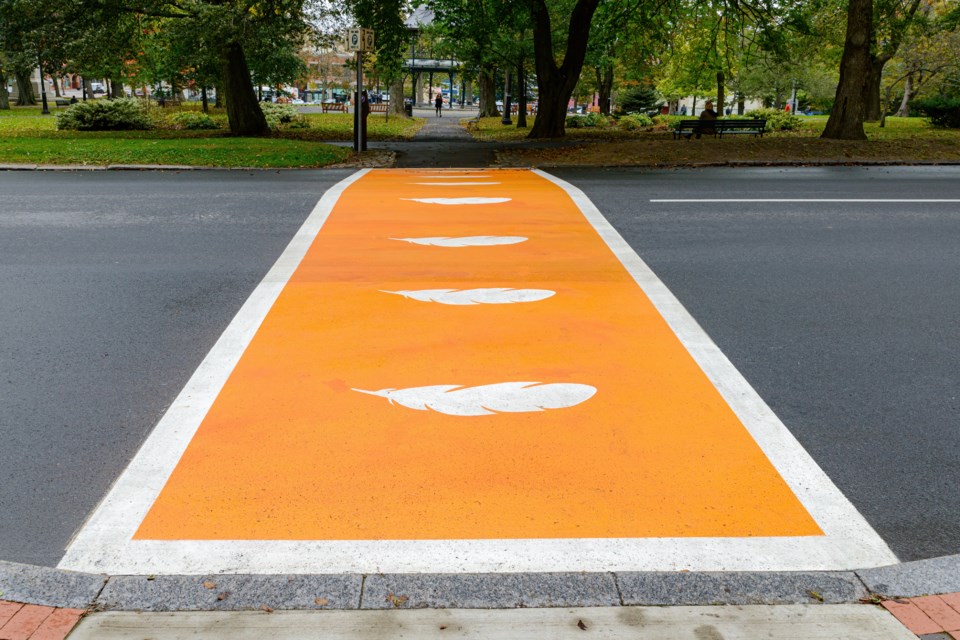Editor’s note: This article contains details that some readers may find distressing
“, adorning banners, orange shirts, decals and memorials to the Indigenous children who died at or went missing from Indian Residential Schools and similar institutions.
Indigenous communities have used these words to recognize the thousands of Indigenous children , never to return.
Despite this truth being something communities knew for decades, it took the use of scientific methods to locate potential unmarked graves of children buried near the former Kamloops Indian Residential School to garner the attention of non-Indigenous people, both in Canada and globally.
On May 27, 2021, — that number .
In the first rush of media coverage and public outrage, governments were quick to for communities to undertake searches around the sites of former Indian Residential Schools.
Memorials of . The Canadian flag . Orange Shirt Day was transformed into an . And First Nations communities across the country .
The numbers from Kamloops were originally reported as , then the numbers began to climb as more unmarked graves were found at the former , . But inaccurate numbers also surfaced on social media — first , , and it didn’t take long for people to try and downplay the numbers and cast doubt on the results.
As someone who has worked with Indigenous communities for several years to help , it is very important to me for people to understand the difficult journey survivors and communities must take in order to find justice and healing.
Who is responsible for their deaths?
Finding the graves of children who died at Indian Residential Schools is a challenging task. Information exists in archives about the deaths of children, which has contributed to . As of May 24, 2022, the register has 4,130 confirmed names of children who died while at Indian Residential Schools.
Some of these records indicate where the children were buried, including cemeteries located near the schools. of disappearances or deaths of children at these institutions, with .
Thousands of children died, and by all accounts , meaning the number of children who died is likely much higher than what is currently known.
The questions that haunt families and communities are: Where are their children buried, and who is responsible for their deaths?
Ground penetrating radar
One year after the announcement, Indigenous communities across the country are working to find the specific locations where children may be buried.
Many families were never notified if their children died while at school. And even when they were, . Survivors have often spoken of times where deaths occurred and .
are now being mobilized to try to narrow down where graves may be found to mark, commemorate and investigate what happened to children.
At best, that look grave shaped, based on interpretations of results from scans. In some cases, such as in unmarked sections of historic cemeteries, these are likely to be graves. In other cases it is less clear. In all cases, further investigation is warranted. And the nature of that investigation will have to be decided by the communities whose children were forced to attend that school.
The technical results of ground-penetrating radar surveys have become vital, but they are not the first step, nor the last, in the search for justice. Communities are working to find their lost children and hold those who were responsible for the horrors of Indian Residential School accountable, but they need certain supports to be able to do so.
There needs to be ongoing funding and access to expertise in a co-ordinated manner to ensure families and communities get the answers they deserve.
There are likely thousands of graves at former Indian Residential Schools across the country, but we don’t yet have enough information to know where most of them are located — some are likely lost forever.
As the number of anomalies reported increases over the months and years to come, we can’t forget that every child matters. Each grave represents a beloved member of a family who was torn away from their community. Each grave represents a story of a child stolen. Every family that lost their children to this genocide deserves answers. Reconciliation isn’t possible without truth and we must not turn away from the truth.
Every child matters.
If you are an Indian Residential School survivor, or have been affected by the residential school system and need help, you can contact the 24-hour Indian Residential Schools Crisis Line: 1-866-925-4419.
![]()
Kisha Supernant does not work for, consult, own shares in or receive funding from any company or organization that would benefit from this article, and has disclosed no relevant affiliations beyond their academic appointment.



